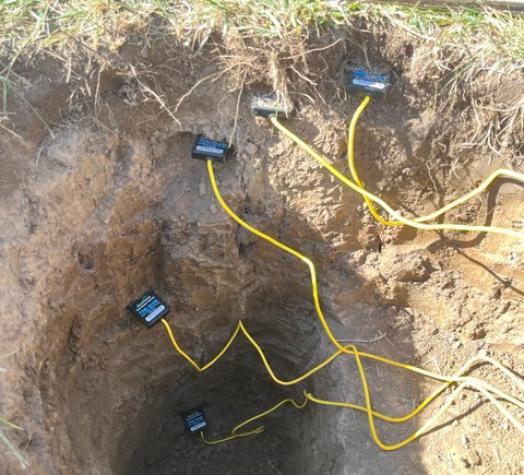A new weather station at Echo Bluff State Park in Shannon County marks the 46th station in the Missouri Mesonet, the state’s expanding weather station network. University of Missouri Extension state climatologist Zachary Leasor says the location was chosen in part to more closely monitor weather conditions in forested environments.
Located on a ridgetop within the park, the site presents unique challenges for weather monitoring. In densely forested areas, it is difficult to install weather stations that meet standards and recommendations established by weather and climate experts. But trees and their canopies create a unique microclimate where weather conditions in a forest can vary over short distances, says MU Extension state forester Hank Stelzer.
In addition to monitoring meteorological variables, the Echo Bluff station will also measure soil temperature and moisture at different depths. “These measurements will allow us to better understand how forest soil moisture is impacted by periods of wetness and dryness,” says Leasor. “Previous soil moisture monitoring efforts have been primarily focused in agricultural and grassland areas where the dynamics of plant water use and evapotranspiration are different from forests.”
The network plans to expand its forested monitoring sites in collaboration with the Missouri Department of Natural Resources’ Hydrology Information Center. The Missouri Climate Center and Missouri Resource Assessment Partnership are researching a monitoring plan to guide the selection of new sites that fill in coverage gaps and represent Missouri’s diverse environmental characteristics.
Soil moisture data provides a critical link between the atmosphere and land surface, Leasor says. Improved monitoring will support forestry and fire weather applications while providing important data to research the impact of weather and climate on forests. Forest health can be affected by flooding, drought and long-term climate trends. Data will also be critical for modeling and predicting hydrologic extremes across the Ozarks.
Trees have been subjected to great stress in the past century, says Stelzer. Despite the resilience of trees, droughts, floods and disease have taken their toll.
Fortunately, new technology allows researchers to closely study how forestlands respond. Data obtained from weather stations combined with data gathered by drones give insight into the health of forests, says Stelzer.
Learn more about Missouri Mesonet.
Photo
Weather station
A new weather station at Echo Bluff State Park in Shannon County will measure soil temperature and moisture. This photo from the installation of a weather station at MU South Farm in Columbia shows how soil moisture sensors are staggered at different depths. Photo courtesy of MU Extension state climatologist Zachary Leasor.
